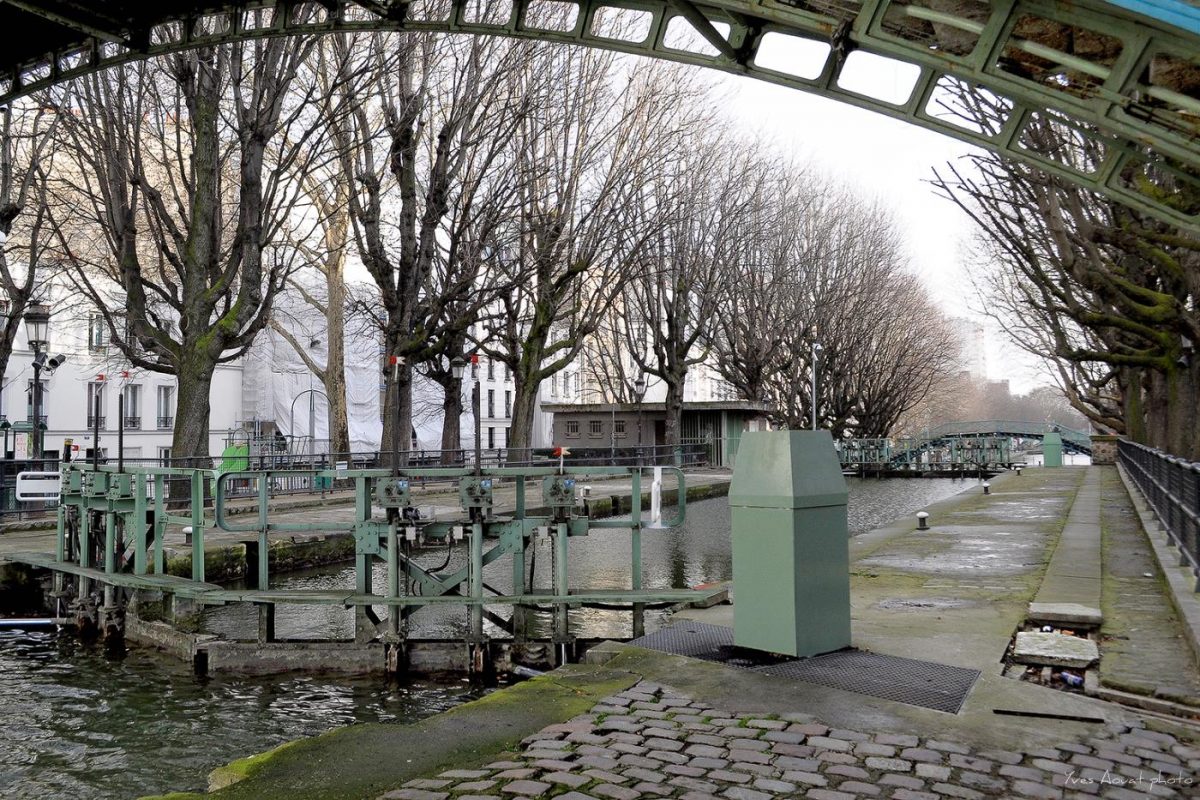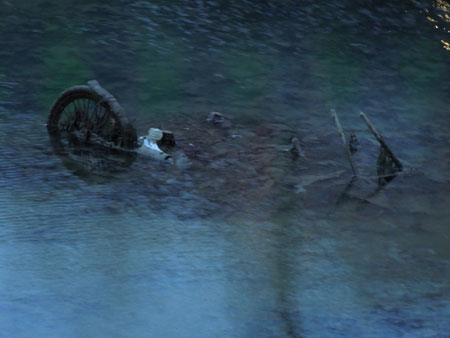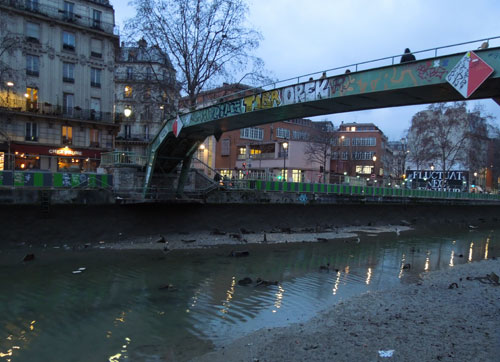Water in Paris Part 5: The Paris Canals
 The city of Paris is the proprietor of and responsible for a fluvial network of 130km of canals which cross 5 departments (Paris, Seine-Saint-Denis, Seine-et-Marne, Oise and Aisne) and two regions (Île-de-France et Picardie). There are three canals that interconnect: canal de l’Ourcq brings in water from the rivers Ourcq and Marne to feed the canals Saint Martin and Saint Denis.
The city of Paris is the proprietor of and responsible for a fluvial network of 130km of canals which cross 5 departments (Paris, Seine-Saint-Denis, Seine-et-Marne, Oise and Aisne) and two regions (Île-de-France et Picardie). There are three canals that interconnect: canal de l’Ourcq brings in water from the rivers Ourcq and Marne to feed the canals Saint Martin and Saint Denis.
The construction of the Paris canal network was ordered by Napoleon I in 1802 as a way of providing fresh water to Paris which was out-growing its sources. It was also instrumental in transporting goods including food and building materials by boat, with two ports established at the Port de l’Arsenal and the Bassin de la Villette. This was the first time that the same waterway was to be used for navigation and drinking water. It took 23 years to complete the network of canals. Rest assured the canal water is no longer used for drinking water, but it is still makes up 60% of Paris’ unique secondary water network for street cleaning and gardening.
The canal de l’Ourcq, nearly 100km long, begins at Mareuil-sur-Ourcq and ends at the Bassin de la Villette and has ten locks. The name l’Ourcq comes from the grain-growing region to the north east of Paris and the river of the same name.
The canal Saint Denis is 6.6km long and connects the canal de l’Ourcq (near parc de la Villette) in Paris to the Seine in the town of Saint-Denis which is 30km down river from the Bastille in seven locks. It’s a connector canal allowing bigger boats to circumnavigate central Paris. Although larger and with more industrial transport than the other canals there are quite a number of fishermen along this canal which attests to the rather good quality of the water.
The canal Saint Martin is 4.5 km long and connects the Canal de l’Ourcq from the Bassin de la Villette to the Seine below the Bastille. Between Place de la Bastille and Place de la République it runs through a 2km tunnel built in 1860-62 creating thus the Boulevard Richard Lenoir at street level. There are nine locks along the route which were modernized in 2008 and are now controlled remotely. The canal is open to traffic 363 days a year, but 2016 is exceptional as it is a year for cleaning.
 Every 15 years the canal is cleaned and the locks are repaired. At the beginning of 2016 the process began when a diver went down to inspect the grooves in which the upper most lock must slide in order to block the water flow. The murky water only allows 10-15 cm of visibility so this was a time consuming task. Once the lock was closed and the water source cut off it was time to move the fish to the bassin de la Villette. There are 5 species of fish mostly toothy ones like pike, A 20 kilo carpe was found amongst the fish in 2001. Once the canal was emptied of it 90,000 cubic meters of water (think 90 million one liter bottles) the cleaning will take over three months. In the end there will be a full inventory of refuse (40,000 metric tons in 2001), but many items are already revealed. Here’s a partial list of found objects past and present:
Every 15 years the canal is cleaned and the locks are repaired. At the beginning of 2016 the process began when a diver went down to inspect the grooves in which the upper most lock must slide in order to block the water flow. The murky water only allows 10-15 cm of visibility so this was a time consuming task. Once the lock was closed and the water source cut off it was time to move the fish to the bassin de la Villette. There are 5 species of fish mostly toothy ones like pike, A 20 kilo carpe was found amongst the fish in 2001. Once the canal was emptied of it 90,000 cubic meters of water (think 90 million one liter bottles) the cleaning will take over three months. In the end there will be a full inventory of refuse (40,000 metric tons in 2001), but many items are already revealed. Here’s a partial list of found objects past and present:
- Vélib and other bikes
- chairs of all shapes
- shopping carts
- street signs
- kid’s scooters
- motor scooters
- suitcases
- a pistol
- gold pieces
- two 75mm shells from WWI
- two empty safes
- wheelchairs
- toilettes
- kitchen utensils
- police barriers
- a palette-mover
- beds
- refrigerators
 Stay tuned for the 2016 final inventory. For other photos visit Le Figaro
Stay tuned for the 2016 final inventory. For other photos visit Le Figaro
When the canal reopens in time for les beaux jours it might be the time to enjoy that fresh water it from a boat. There are hour long trips that run though the tunnel and others a half or full day than run up the Canal de l’Ourcq into the countryside.
Another way to enjoy the Paris canals de l’Ourcq and Saint Denis is by bike. From Paris you can ride 30km right along the canal de l’Ourcq. On nice sunny days it is very busy with pedestrians and bikers.
Learn more history of the Canals In French
This article is part of a series of articles about Water in Paris.
- Part 1: La Seine
- Part 2: Drinking water
- Part 3: Non-Drinking water
- Part 4: Crossing the Seine
- Part 5: Paris Canals
- Part 6: Tidbits
- Part 7 : Speak Easy, idomatic expressions using water
- Part 8: Paris flood 2016


